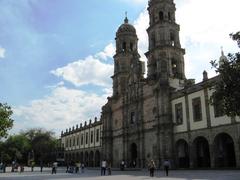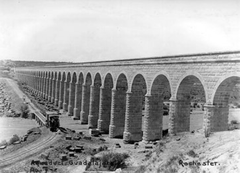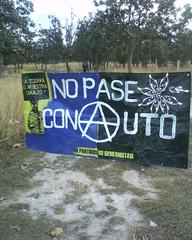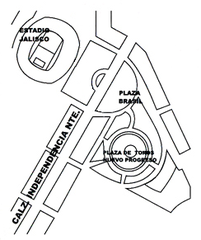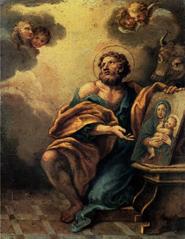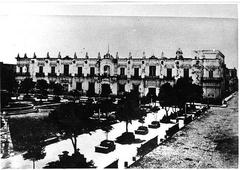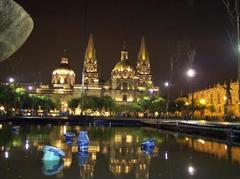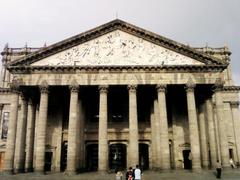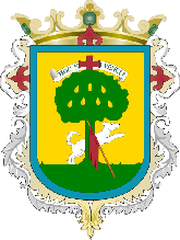Monumento A La Madre Guadalajara: Visiting Hours, Tickets, and Historical Sites Guide
Date: 04/07/2025
Introduction
Located in the vibrant heart of Guadalajara, Mexico, the Monumento A La Madre is a profound tribute to motherhood and a significant symbol of the city’s cultural heritage. Commissioned and inaugurated in 1956 at Plaza 10 de Mayo, the monument reflects Mexico’s deep reverence for maternal figures, blending indigenous symbolism with national identity. As both a work of art and a dynamic public space, it serves as a focal point for community engagement, cultural celebrations, and civic reflection. Recent renovations have further enhanced its accessibility, safety, and visual appeal, making it an essential destination for both locals and visitors (Wikiwand; UnoTV; Quadratín Jalisco).
This guide offers a comprehensive overview of the Monumento A La Madre, including its historical origins, artistic features, visitor information (such as hours, tickets, and accessibility), travel tips, nearby attractions, and recent restoration efforts. Whether you are seeking to appreciate its cultural significance, take part in Mother’s Day festivities, or simply explore one of Guadalajara’s most cherished public spaces, this article provides all you need to enrich your visit.
Table of Contents
- History and Commissioning
- Artistic Design and Symbolism
- Social and Cultural Impact
- Construction and Materials
- Urban Integration and Recent Renovations
- Visiting Information
- Nearby Attractions
- Special Events and Guided Tours
- Photography Tips
- FAQs
- Additional Resources and Further Reading
History and Commissioning
The Monumento A La Madre was conceived during a period of national reflection and pride, following the institutionalization of Mother’s Day in Mexico in 1922. Inspired by the desire to honor mothers throughout the nation, Guadalajara’s civic leaders and local organizations rallied to establish a monument dedicated specifically to maternal figures. The chosen site, Plaza 10 de Mayo, was named in direct reference to the official date of Mother’s Day in Mexico, embedding the monument within the fabric of local and national celebrations (Wikiwand).
Artistic Design and Symbolism
The monument’s centerpiece is a striking bronze sculpture of an indigenous mother gazing upward while protectively sheltering her child. This composition reflects themes of hope, resilience, and nurturing care. The indigenous features pay homage to the foundational role of native communities in Mexican identity, while the mother’s upward gaze symbolizes guidance and aspiration. The base, constructed from local volcanic rock, reinforces the monument’s connections to strength and endurance (Wikiwand).
Social and Cultural Impact
Since its inauguration in 1956, the Monumento A La Madre has become a living symbol of maternal devotion, evolving alongside shifts in Mexican society. It has served as a focal point for Mother’s Day celebrations, civic gatherings, and, more recently, social activism and gender discourse. The monument’s public space has hosted ceremonies, advocacy events, and moments of reflection, exemplifying its ongoing relevance in the city’s cultural and civic landscape (Wikiwand).
Construction and Materials
Created by sculptor Joaquín Arias, the monument combines enduring bronze with volcanic rock, both materials chosen for their symbolic and practical qualities. The bronze casting captures intricate details, while the volcanic rock base anchors the structure in the local landscape. The monument’s scale and elevation ensure its prominence within Plaza 10 de Mayo (Quadratín Jalisco).
Urban Integration and Recent Renovations
Plaza 10 de Mayo, where the monument stands, was designed as an inclusive, landscaped public space with gardens, seating, and pedestrian pathways. In 2024, the plaza underwent a major renovation, with over 10 million pesos invested in restoring the monument, upgrading lighting, landscaping, and accessibility features. These improvements have reinvigorated the plaza, creating a safe and welcoming environment for visitors and enhancing its role as a venue for cultural events (Milenio; UDG TV).
Visiting Information
Hours and Admission
- Visiting Hours: The monument and plaza are open 24 hours a day, every day of the year. While accessible at all times, the best hours for visiting and photography are in the morning or late afternoon.
- Admission: Entry is free; no tickets are required (GDLgo).
Accessibility
- Wheelchair Access: The plaza offers smooth, ramped pathways and accessible seating areas.
- Public Amenities: Clean restrooms, shaded seating, and drinking fountains are available.
- Safety: The area is well-lit and monitored, especially following the 2024 renovations.
Directions and Transportation
- Location: Plaza 10 de Mayo, Colonia El Retiro, northeast of Guadalajara’s historic center.
- Public Transport: Served by several bus routes and accessible from nearby light rail stations.
- Taxi/Rideshare: Widely available throughout Guadalajara.
- Parking: Street parking and paid lots are available nearby.
Safety Tips
- Visit during daylight for optimal safety and enjoyment.
- Exercise standard precautions as in any urban public space.
Nearby Attractions
Enhance your visit by exploring nearby landmarks:
- Guadalajara Cathedral: A 16th-century architectural icon.
- Plaza de Armas: The city’s central square with gardens and fountains.
- Instituto Cultural Cabañas: A UNESCO World Heritage site featuring murals and exhibitions.
- Museo Regional de Guadalajara: Local history and art museum.
- Rotonda de los Jaliscienses Ilustres: Honoring notable figures from Jalisco (Voyage Mexique).
Special Events and Guided Tours
- Mother’s Day (May 10): The monument is the site of vibrant celebrations with ceremonies, music, and cultural performances.
- Guided Tours: Many local operators include the monument in historical city tours, offering context and insights into its significance.
- Community Events: The plaza regularly hosts cultural fairs, artisan markets, and public gatherings.
Photography Tips
- Best Lighting: Golden hour (early morning or late afternoon) accentuates the monument’s details.
- Angles: Capture the upward gaze of the mother and the interaction with the landscaped plaza.
- Night Shots: The monument is beautifully illuminated after sunset.
- Nearby Street Life: Local cafes and markets provide dynamic backdrops and authentic city scenes.
Frequently Asked Questions (FAQ)
Q: What are the Monumento A La Madre visiting hours?
A: Open 24 hours daily; best visited during daylight for safety and optimal lighting.
Q: Is there an entrance fee?
A: No, admission is free.
Q: Is the site accessible for people with disabilities?
A: Yes, the plaza features ramps and smooth paths suitable for wheelchairs and strollers.
Q: Are guided tours available?
A: Yes, many city tours include the monument as a stop.
Q: What is the best time to visit?
A: Mornings for tranquility, evenings for illuminated views, or May 10th for Mother’s Day festivities.
Q: Are there other attractions nearby?
A: Yes, including the Guadalajara Cathedral, Plaza de Armas, and Instituto Cultural Cabañas.
Additional Resources and Further Reading
- Official Guadalajara Tourism Website
- Wikiwand: Monumento A La Madre, Guadalajara
- UnoTV: Monuments to Motherhood in Mexico
- Milenio Article on the Renovation
- UDG TV: Restoration News
- Luuupa: Architectural and Social Significance
- Voyage Mexique: Guadalajara Cathedral
- Reddit: Local Cuisine Tips
Final Recommendations
The Monumento A La Madre stands as a timeless emblem of maternal reverence and civic pride, blending artistic beauty with profound social significance. Its recent restorations and accessible design make it a welcoming destination for all. For the most rewarding experience, plan your visit around cultural events, enjoy the nearby historical sites, and take time to relax in the revitalized plaza. Remember to check local listings or the official tourism website for updated information on events and guided tours.
For more travel insights, download the Audiala app and follow our social media channels for the latest updates on Guadalajara’s cultural treasures and historical sites.
Images and interactive maps are available on our website to enrich your visit.
